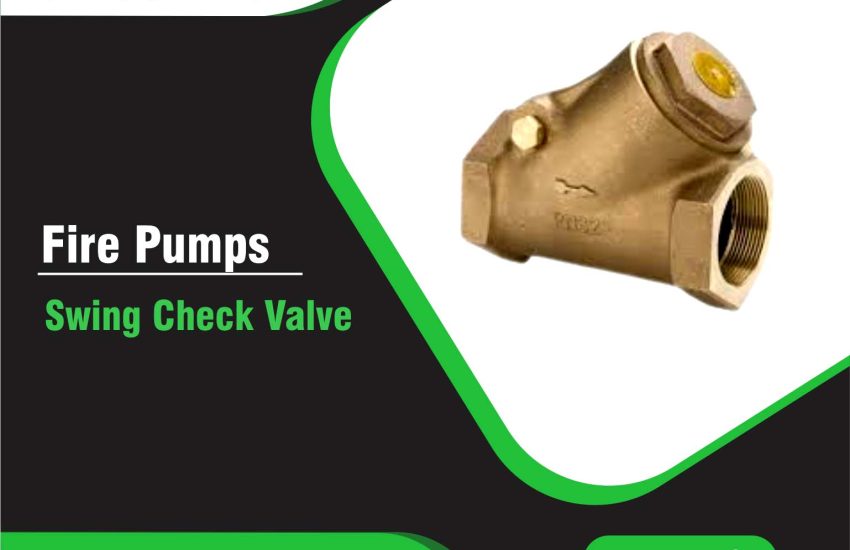Swing Check Valve plays a crucial role in fluid control systems by allowing fluid to flow in only one direction. This valve prevents back flow, protecting the system from damage. Swing check valves are widely used in various industries, including water treatment, oil and gas, and industrial sectors. In this article, we explore the specifications, features, and common applications of swing check valves.
What is a Swing Check Valve?
A swing check valve is designed to ensure fluid flows in one direction while preventing reverse flow. The valve consists of a disc that swings open to permit flow and closes automatically when the flow direction reverses. This simple yet effective mechanism makes the swing check valve ideal for use in pipelines where backflow must be prevented. As a result, the system remains safe and efficient.
Key Specifications of Swing Check Valves
Swing check valves come in various designs and configurations. Understanding their specifications helps you select the right one for your application. Below are key specifications to consider:
- Material:
- Manufacturers commonly use materials like cast iron, stainless steel, bronze, or ductile iron.
- Stainless steel provides excellent corrosion resistance, making it suitable for harsh environments.
- Size Range:
- These valves come in sizes ranging from 2 inches to 36 inches and even larger.
- You can also request custom sizes based on your specific needs.
- Pressure Rating:
- Swing check valves are typically rated for pressures from 150 psi to 2500 psi.
- Depending on your application, selecting the appropriate pressure rating ensures durability and performance.
- Temperature Range:
- These valves can handle temperatures from -20°C to 450°C.
- If you work in extreme temperature environments, you can find specialized models that cater to these conditions.
- End Connections:
- Swing check valves are available with flanges, threaded, or welded end connections.
- Choose the right connection type depending on your pipe system and installation requirements.
- Flow Direction:
- These valves allow flow in only one direction, and they automatically block reverse flow.
- The valve’s disc swings freely to close when reverse flow occurs, providing effective back flow prevention.
- Seat Type:
- Swing check valves come with metal-to-metal or soft seats.
- Soft seats create a better seal, while metal-to-metal seats are ideal for high-temperature and high-pressure situations.
- Operation Type:
- Swing check valves operate automatically without external power.
- Fluid flow itself moves the disc, ensuring seamless operation without any manual intervention.
Features of Swing Check Valves
- Prevents Back flow:
- The primary feature of a swing check valve is its ability to prevent back flow. By doing so, it protects pumps, compressors, and other vital equipment from damage caused by reverse flow.
- Simple and Reliable Design:
- Swing check valves have a straightforward design that ensures reliability. With minimal moving parts, they are easy to maintain and less prone to malfunction.
- Durability:
- Constructed with durable materials, these valves perform reliably in demanding conditions. They offer long-lasting service, even in challenging environments.
- Wide Application Range:
- Swing check valves are versatile and fit many applications. Industries such as water treatment, oil and gas, and HVAC systems frequently use them.
- Cost-Effective:
- Due to their simple design, swing check valves are often cost-effective solutions for preventing back flow in pipelines.
- Low Maintenance:
- These valves require minimal maintenance, reducing downtime and operational costs.
Applications of Swing Check Valves
Swing check valves are used in various industries where preventing backflow is crucial. Below are common applications for these valves:
- Water Treatment Plants:
- In water treatment plants, swing check valves help ensure smooth water flow. They prevent back flow, maintaining clean and regulated water distribution.
- Oil and Gas Industry:
- These valves play an essential role in oil and gas pipelines by preventing reverse flow that could damage pumps and compressors.
- HVAC Systems:
- In HVAC systems, swing check valves ensure proper flow of heating and cooling fluids, protecting the system from reverse flow.
- Chemical Processing:
- Swing check valves are also used in chemical processing plants to prevent back flow of hazardous materials, ensuring system safety.
- Pumping Stations:
- In pumping stations, swing check valves protect pumps by preventing back flow and ensuring smooth fluid flow in one direction.
Benefits of Using Swing Check Valves
- Back flow Prevention: The primary advantage of using swing check valves is their ability to prevent back flow, which can otherwise cause serious damage to pumps and other equipment.
- Improved System Efficiency: By maintaining one-way flow, these valves help systems run smoothly and efficiently, avoiding issues related to contamination or reverse flow.
- Durability and Reliability: Swing check valves are designed to last, offering high performance even in tough environments.
- Low Maintenance: With minimal moving parts, these valves require little maintenance, which helps reduce operational downtime and repair costs.
- Cost-Effective: Swing check valves offer a cost-effective solution for back flow prevention without requiring expensive technology or complicated systems.
Conclusion
Swing check valves are critical components for ensuring fluid flows in one direction while preventing back flow. With their ability to protect systems from damage, simple design, and cost-effectiveness, they are indispensable in water treatment plants, oil and gas pipelines, HVAC systems, and many industrial applications. When selecting a swing check valve, ensure you choose one with the correct material, size, pressure rating, and temperature range for your specific needs. By doing so, you can maintain smooth, efficient, and safe operations in your systems.


